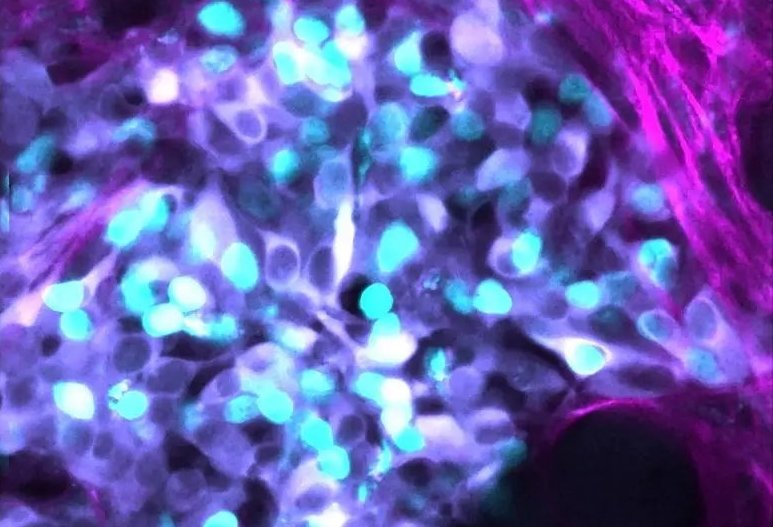
Image source: Garvan Institute of Medical Research
News • Randomness as resistance strategy
Cancer response to chemotherapy: a game of chance?
Inherent ‘noise’ in the system of gene expression in tumour cell death is another tool cancer cells use to resist chemotherapy treatment.
Cancer cells have an innate randomness in their ability to respond to chemotherapy, which is another tool in their arsenal of resisting treatment, new research led by the Garvan Institute of Medical Research shows. The new study is published in the journal Science Advances. Understanding why some tumour cells become resistant to chemotherapy is a core challenge in cancer research, as chemotherapy is still a frontline treatment for most cancers.
Combining chemotherapy with drugs that target this noise within tumours may have the best results as a first-line treatment after diagnosis, before tumours lock into a state of resistance
David Croucher
The new research shows that tumour cells from neuroblastoma – a cancer that develops in the body’s ‘fight or flight’ sympathetic nervous system – can move between states of responding, or not, to chemotherapy. “We showed there is ‘noise’ in the process of cell death, which is what happens to cancer cells after chemotherapy treatment – and that this inherent noise, or randomness, in the system of gene expression is an important aspect of chemoresistance,” says Associate Professor David Croucher, Head of the Network Biology Lab at Garvan.
About 15% of people with neuroblastoma don’t respond to chemotherapy treatment. “Our findings suggest that genetics don’t account for everything; other layers of regulation and other mechanisms of tumour progression can also underpin drug response, so we need to consider them,” says Dr Sharissa Latham, co-lead author on the study.
The team showed that once neuroblastoma cells reach a state of resisting chemotherapy, they can’t go back, suggesting there is a small window where treatment could work on a tumour cell before it’s locked in. “Combining chemotherapy with drugs that target this noise within tumours may have the best results as a first-line treatment after diagnosis, before tumours lock into a state of resistance,” says Associate Professor Croucher. This flips on its head the typical protocol for clinical trials in cancer where a new treatment is given to patients who have exhausted all other treatment options.
Source: Garvan Institute of Medical Research
06.03.2023











